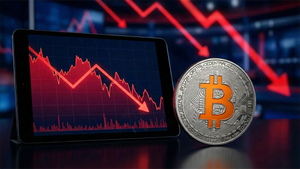Fed’s Brainard Makes Case For Digital Currency and Stablecoins
According to Federal Reserve Vice Chairwoman Lael Brainard in testimony before the House Financial Services Committee on Thursday, central bank digital currencies might one day give customers additional certainty in the face of an increasing number of privately issued digital tokens like stablecoins.
As a government-backed money supply, stablecoins and a central bank digital currency might coexist in the future and complement one another, according to the economist.
To stay up with private payments innovations like stablecoins, a cryptocurrency tethered to the dollar or another national currency; the Fed is exploring whether to create a new cryptocurrency as a substitute for cash.
In contrast to private cryptocurrencies like Bitcoin, a government organization like the US central bank would create and endorse a Fed-issued central bank digital currency. A digital dollar would be backed by the federal government the same way as paper dollars and coins are.
It seems doubtful that the Fed will make a decision very soon since Fed policymakers are split on the issue of creating a digital currency.
After TerraUSD, one of the biggest stablecoins at the time, dropped considerably below a dollar, authorities once again focused on stablecoins. Representative Maxine Waters (D-CA) of the House Financial Services Committee believes that the United States needs a central bank digital currency to remain competitive against other nations, such as China, which is developing or has already launched digital currencies.
“A digital currency might guarantee consumers throughout the globe using the dollar that they can continue to rely on its strength and dependability to conduct business and transactions in the digital economy,” Brainard said in her written testimony.
The benefits of digital money were not enough to convince House Republicans. Congressional Representative Patrick McHenry (R., NC) argued that the dangers of a digital currency outweighed the benefits.
According to Ms Brainard, there are several advantages for customers who acquire secure, central-bank-created currency. Using stablecoins to make digital payments would help solve the fragmentation of payment systems, she added.
In January, the Federal Reserve produced a paper asking for public feedback on whether or not a digital dollar would strengthen the domestic payment system.
When it comes to digital currency, America is a long way behind the pack.
Private electronic money alternatives are on the rise, and central banks across the globe are contemplating creating their versions to combat the problem.
Other cryptocurrencies, such as bitcoin, ether, and tether, have been subject to wild price swings and are commonly used in criminal behavior. In addition, they have yet to gain traction to make routine purchases like food or movie tickets.
China’s new digital currency has banned non-monetary electronic currencies such as bitcoin, ether, and tether. However, El Salvador has become the first country to embrace bitcoin as its official currency in addition to the US dollar.
Banks and trade associations claim that a digital dollar issued by the Federal Reserve would have several negative consequences in the United States, including a reduction in deposits at traditional commercial banks, an increase in interest rates on consumer and business loans, and an exodus of deposits from these institutions.
Proponents of the idea claim that; a Fed digital dollar would allow money to flow more rapidly and cost less across the financial system. This will allow individuals without bank accounts to participate and allow the government to deliver financial support more effectively.
He has said that getting the digital dollar right is more essential than being first to market, notwithstanding Chairman Powell’s doubts. It’s critical to get the dollar properly since it plays an essential role in the global economy.
Ex-Fed governor Randal Quarles has raised fresh doubts about the need for a Fed digital currency. He left the organization in December. A Fed digital currency would neither pull those who don’t have bank accounts into the financial system nor cut transaction costs, which can be done in other ways, he noted in a statement made last summer.
The post Fed’s Brainard Makes Case For Digital Currency and Stablecoins appeared first on Best Stocks.
More News
View More




Recent Quotes
View MoreQuotes delayed at least 20 minutes.
By accessing this page, you agree to the Privacy Policy and Terms Of Service.